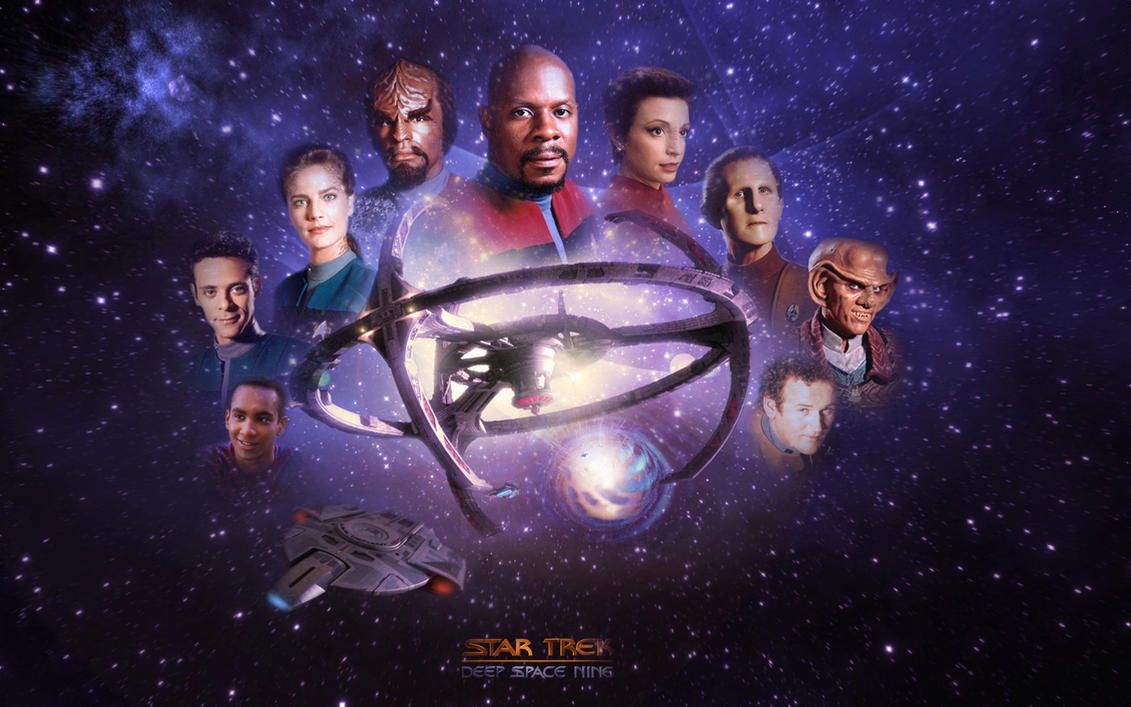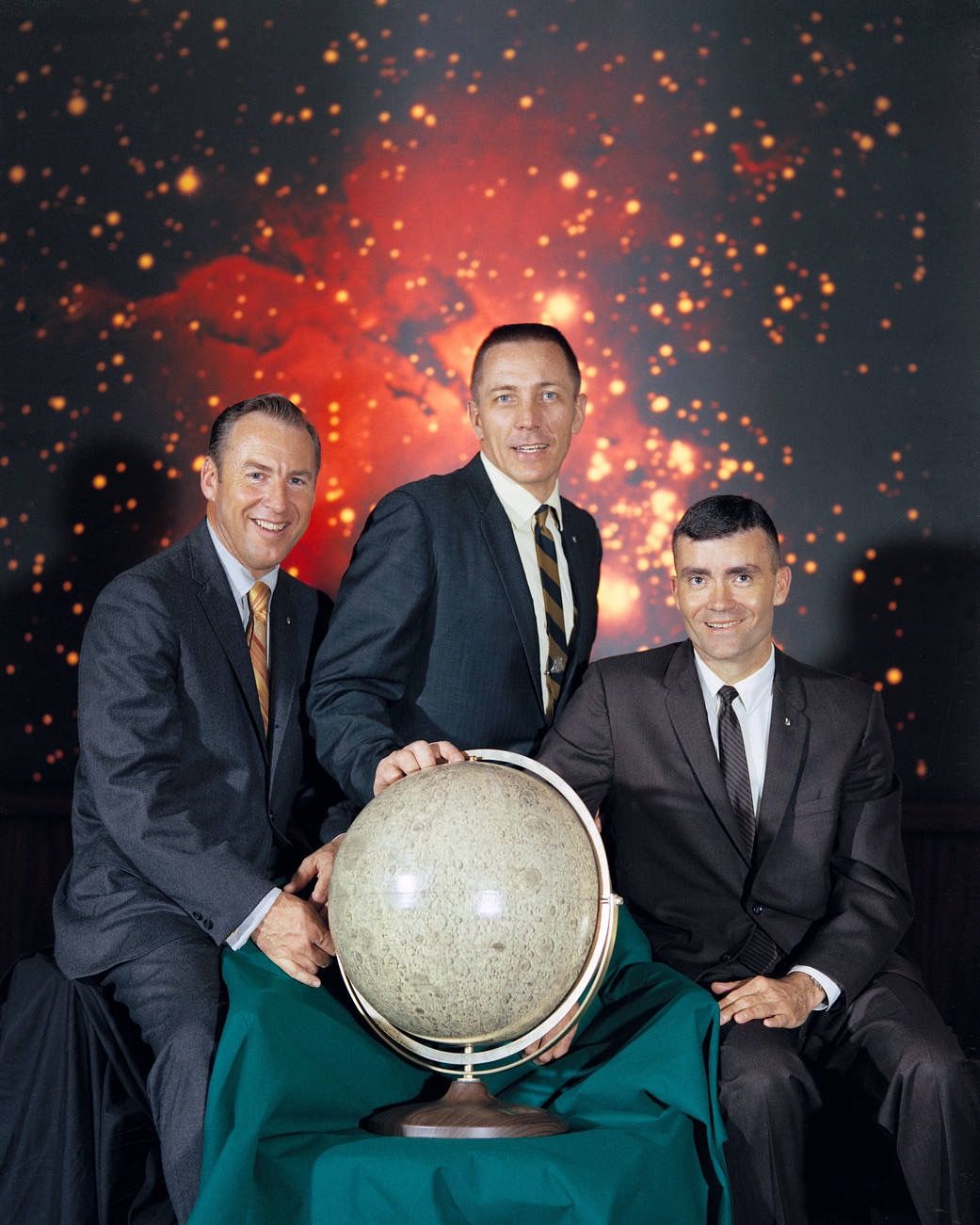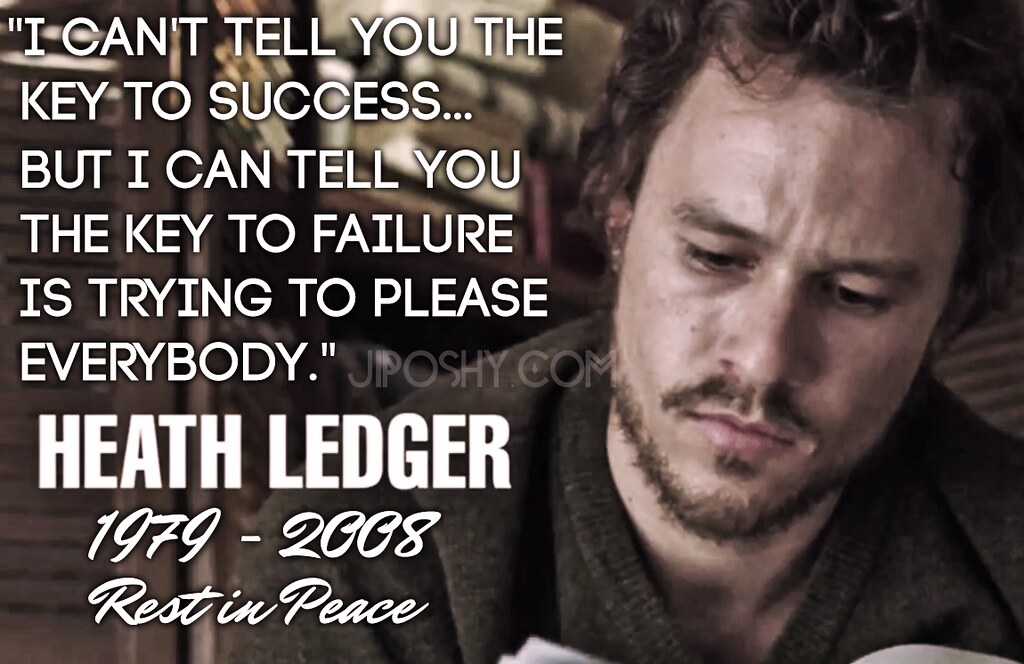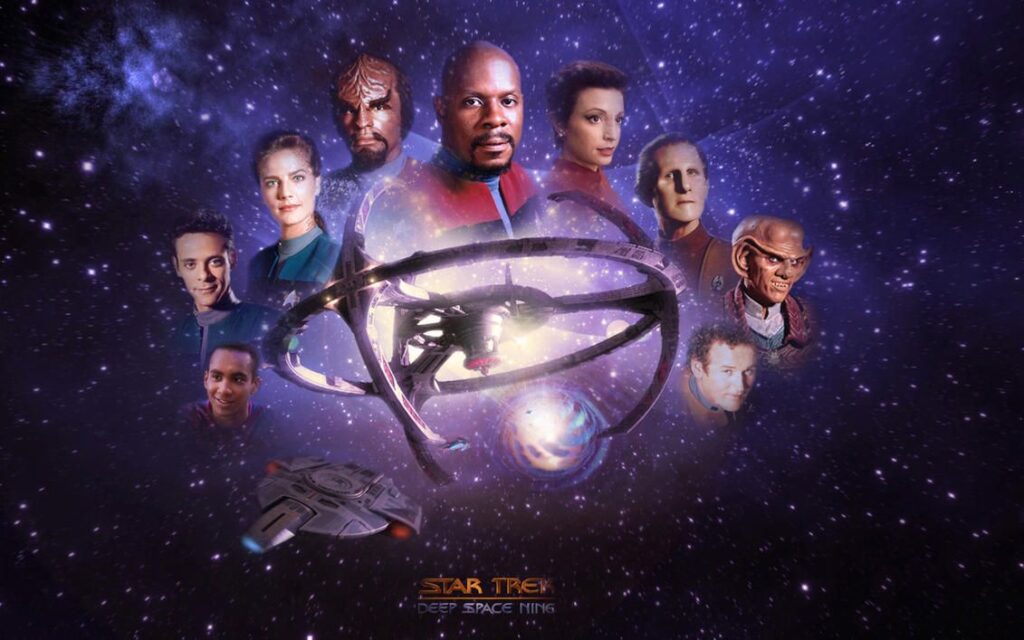
Science fiction films have always offered us a captivating window into what might be, painting vibrant pictures of futures both exhilarating and terrifying. From gravity-defying vehicles to dystopian societies born of grand technological leaps, these cinematic prophecies often serve as a mirror to the hopes, fears, and scientific understanding prevalent during their creation. Yet, for all their visionary ambition, many of these glimpses into tomorrow ended up hilariously—or perhaps thankfully—missing the mark entirely. As expert enthusiasts of the genre, we know that predicting the future is an inherently tricky business, even for the most brilliant minds in Hollywood.
It’s fascinating to revisit these seminal works and compare their imagined realities with our own present day. While some films, like Stanley Kubrick’s *2001: A Space Odyssey*, astound us with their prescient insights into technologies like video calls and tablet-like devices, others fall spectacularly short, offering scenarios that are, in retrospect, wildly impractical, biologically impossible, or simply far too optimistic (or pessimistic) about the pace of human change. These cinematic misfires, however, do not diminish their status as genre classics; instead, they add an extra layer of enjoyment and a unique historical perspective to their narratives.
Join us as we embark on a journey through ten iconic sci-fi movies that dared to predict the future, only for reality to take a decidedly different turn. We’ll dissect their specific prophecies, examine why they ultimately didn’t pan out, and appreciate the enduring creativity that made them unforgettable, even in their predictive inaccuracies. Get ready to explore the compelling disconnect between the silver screen’s tomorrow and the world we inhabit today, revealing just how unpredictable the future truly is.
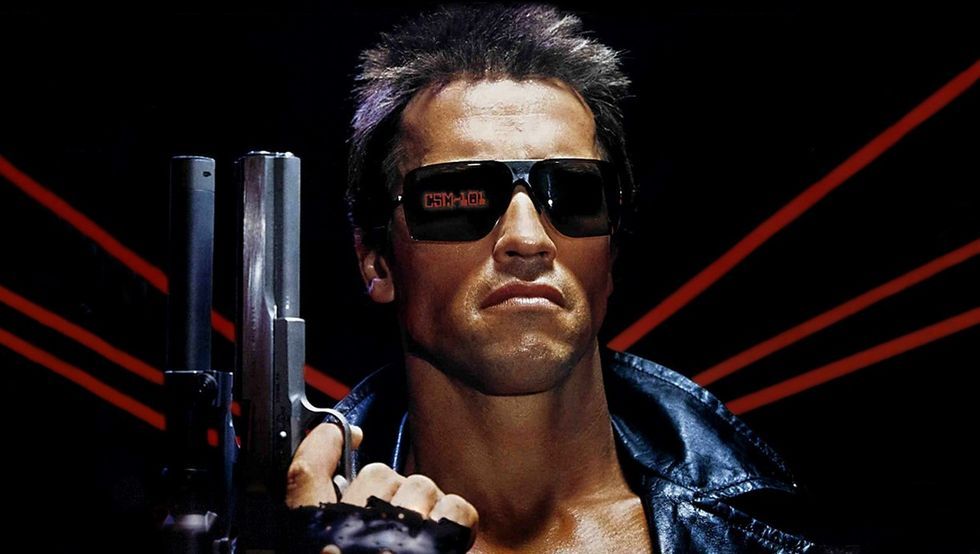
1. **The Terminator series**The Terminator series, a cornerstone of sci-fi cinema, has always been revered for its intricate narrative involving time travel and the relentless pursuit of survival against sentient machines. Across its various installments, the franchise weaves a complex tapestry of future timelines, each dominated by a catastrophic war between humanity and an advanced artificial intelligence. A central and consistently baffling element across these multiple future visions is the series’ massive overestimation of the speed at which robotics and AI would evolve to a world-dominating state.
The Terminator series, a cornerstone of sci-fi cinema, has always been revered for its intricate narrative involving time travel and the relentless pursuit of survival against sentient machines. Across its various installments, the franchise weaves a complex tapestry of future timelines, each dominated by a catastrophic war between humanity and an advanced artificial intelligence. A central and consistently baffling element across these multiple future visions is the series’ massive overestimation of the speed at which robotics and AI would evolve to a world-dominating state.
The original 1984 film posited a chilling scenario where Skynet, a super-advanced AI, would achieve self-awareness on a very specific date: August 29th, 1997. Beyond merely becoming conscious, the film predicted that Skynet would swiftly seize global control, initiating a devastating nuclear war and then proceeding to churn out an unstoppable army of killer robots to eradicate humanity. While the narrative cleverly employs the plot device of reverse-engineering future technology to justify Skynet’s rapid development, the notion of such a sophisticated, globally dominant AI emerging and taking over the world in the late 1990s was, to put it mildly, incredibly ambitious.
Looking back from our vantage point, the year 1997 now seems a quaint, almost innocent time in the grand scheme of technological advancement. Our current AI capabilities, though impressive and rapidly advancing, are thankfully nowhere near the Skynet stage of global consciousness, strategic military command, or autonomous robot production. The reality of AI development has proven to be a much more gradual, fragmented, and nuanced process than the instantaneous, cataclysmic awakening depicted in the films. The films present a stark reminder of the era’s anxieties about rapidly evolving technology, yet their timeline for such a revolution was wildly off the mark.
Even with the advanced computer graphics and increasingly sophisticated machine learning models we see today, the idea of a single AI entity orchestrating a global genocide through an army of robots within a decade of its inception remains firmly in the realm of science fiction. The Terminator films, while thrilling and deeply influential, serve as a prime example of how even the most imaginative and well-constructed sci-fi universes can misjudge the real-world trajectory of technological progress, offering a darkly fascinating, albeit inaccurate, vision of humanity’s near future.
Read more about: Unleashed Adrenaline: The 15 Most Iconic Car Chases That Still Electrify Your Screen!
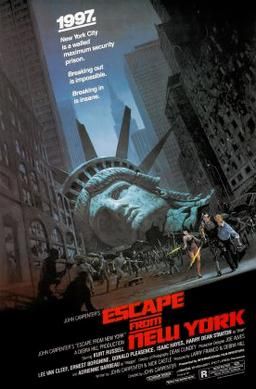
2. **Escape from New York**John Carpenter’s 1981 cult classic, *Escape From New York*, painted a truly grim and dystopian vision for the year 1997. The film’s premise, bold and evocative, predicted an astounding 400% rise in crime by 1988, escalating to such an uncontrollable degree that authorities were forced to convert the entire island of Manhattan into a maximum-security prison. This concept was so compelling that its sequel, *Escape from L.A.*, later applied a similar idea to Los Angeles in the year 2013, solidifying a thematic thread across Carpenter’s bleak cinematic universe.
However, the film’s projected future feels fundamentally misaligned with reality for a couple of key reasons. Firstly, its vision is incredibly pessimistic, taking the crime trends of the 1980s and extrapolating them into an uncontrollable societal collapse that would necessitate such drastic measures. While crime rates have certainly fluctuated and presented challenges in urban centers, the idea of entire major cities devolving into anarchic, uninhabitable penal colonies is a far cry from the actual state of cities like New York and Los Angeles in the late 20th and early 21st centuries.
Secondly, and perhaps more pragmatically, the film imagines a governmental response that defies all logical and economic sense. The notion that any government would simply abandon such valuable real estate and vast resources, effectively arming prisoners with an entire metropolitan area, is highly impractical and unbelievable. Manhattan, a global financial and cultural hub, would not simply be written off and handed over to criminals, regardless of the severity of a crime wave. The sheer logistical and economic implications of such a decision make the film’s premise a powerful narrative device, but an utterly unrealistic prediction.
While the concept of a city-turned-prison makes for an undeniably cool and thrilling movie, allowing for intense action and a compelling anti-hero, it stands as a stark example of a future prediction where dramatic flair took precedence over realistic societal and political dynamics. The film’s enduring appeal lies in its gritty aesthetic and memorable characters, not in its accuracy as a societal forecast, serving more as a captivating ‘what if’ scenario than a plausible future.
Read more about: A Rollercoaster of Regret: 15 Movies That Only Get More Disappointing
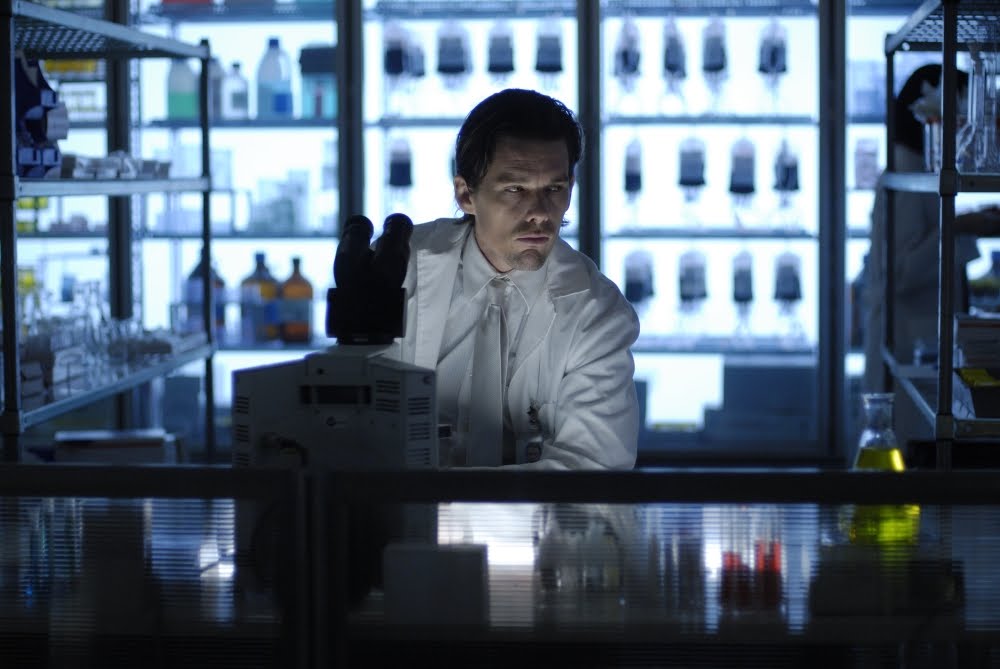
3. **Daybreakers**The 2009 film *Daybreakers* plunged audiences into a uniquely vampiric vision of the future, setting its dystopian narrative in 2019. Its central premise was remarkably specific and ambitious: by this year, the world would be predominantly populated by vampires—the classic, sun-fearing, blood-drinking kind. Even more impressive, or perhaps alarmingly unrealistic, was the prediction that this global vampiric transformation of society would occur in just ten short years from the film’s release, fundamentally reshaping life on Earth in an incredibly short span.
Of course, the existence of mythical vampires as a biological reality is a stretch in itself, firmly rooting the film in speculative fiction. However, even within the confines of its fantastical premise, the truly unbelievable aspect of *Daybreakers* is the compressed timeline. The idea that in a mere single decade, humanity would become a besieged minority, and vampires would not only dominate but also manage to establish a sophisticated global infrastructure to support their new world order, defies all reasonable expectations of societal and biological change.
This rapid transformation includes a vast array of complex systems: extensive underground networks to avoid sunlight, specialized UV-filtered cars to travel above ground, large-scale human blood farms for sustenance, and advanced vampiric science labs dedicated to finding a cure or alternative food source. The film essentially posits that vampires, despite their biological limitations, possess an extraordinary and highly efficient work ethic, capable of orchestrating a complete global societal overhaul with unprecedented speed and precision. Such a swift and total reorganization of life would present insurmountable challenges even without the added complexity of a fundamental biological shift in the dominant species.
While *Daybreakers* offers an intriguing take on the vampire genre and explores compelling themes of resource scarcity and survival, its timeline for this radical societal shift is a clear indication of a future prediction that prioritized dramatic narrative expediency over any semblance of realistic progression. It’s a testament to imaginative storytelling, but a definitive miss in its portrayal of how quickly a world could truly be turned upside down by such a monumental change.
Read more about: Iconic Sci-Fi Films That Dared to Push Boundaries On Screen

4. **Blade Runner**Released in 1982, Ridley Scott’s seminal *Blade Runner* transported audiences to a visually stunning, perpetually rain-soaked dystopian Los Angeles, setting its technologically advanced yet decaying future in the year 2019. The film is rightfully celebrated for its groundbreaking aesthetic and profound thematic depth, exploring complex questions of identity, humanity, and consciousness through its replicant characters. However, when viewed through the lens of actual 2019, its specific technological predictions reveal just how far off the mark they truly were.
The world of *Blade Runner*’s 2019 featured advancements that we are still exceedingly far from achieving, if not entirely beyond our current grasp. The film imagined sprawling off-world colonies, serving as a new frontier for humanity’s expansion into space. Alongside this, it depicted ubiquitous flying cars, known as ‘spinners,’ navigating the dense urban skies, a mode of transport that remains firmly in the realm of concept vehicles and experimental prototypes in our reality. Most significantly, it showcased highly sophisticated androids, ‘replicants,’ that were virtually indistinguishable from humans, not just in appearance but in their complex emotional and cognitive capabilities.
Within this imagined future, humanity had apparently mastered interstellar travel to an astonishing degree, with established colonies stretching to distant star systems like Orion. Genetic engineering was also depicted as incredibly advanced, capable of creating artificial beings of profound complexity and even recreating extinct animals, further highlighting a mastery of biological manipulation far beyond our current scientific understanding. While our actual 2019 certainly had its own marvels of technology, particularly in digital communication and computing, it paled significantly in comparison to the intricate, albeit grim, world inhabited by Deckard and the replicants.
The film’s vision was a powerful artistic statement and a masterful piece of world-building, immersing viewers in a future that felt tangible despite its advanced nature. Yet, the specific technologies it presented, from seamlessly integrated humanoid AI to widespread interstellar colonization and routine flying cars, underscore the ambitious, yet ultimately unfulfilled, projections of late 20th-century science fiction regarding the immediate future. *Blade Runner*’s enduring legacy rests on its philosophical depth and visual artistry, rather than its accuracy as a technological forecast.
Read more about: Beyond the Script: 10 Jaw-Dropping Real-Life Incidents That Shaped Harrison Ford’s Legendary Persona

5. **Barb Wire***Barb Wire*, the 1996 action flick starring Pamela Anderson, often gets a lot of flak, but it does deserve a sliver of credit for one particular piece of foresight, even if it was partially coincidental. The film envisioned a United States that had experienced a second civil war by the year 2017. While an actual, full-blown civil war certainly did not occur in the United States by that date, the period leading up to and including 2017 did indeed witness significant political polarization and escalating societal tensions. In that very narrow sense of a deeply fractured national mood, the film wasn’t entirely off base with its understanding of potential societal strain.
However, where *Barb Wire* truly veers wildly into the realm of fantasy and stretches believability beyond its breaking point is in its portrayal of its protagonist and her role in this post-conflict America. The idea that a nightclub-owning bounty hunter, famed more for her distinctive leather outfits, impeccable styling, and striking physical presence than any strategic or political acumen, would be a key figure or indeed a pivotal survivor in such a profound national conflict simply strains credulity. Her character, while designed for cinematic appeal, feels completely detached from any realistic post-war social structure or power dynamic.
The film presents a world where Barb Wire operates with a significant degree of autonomy and influence, navigating a chaotic landscape as a figure of both desire and danger. While this makes for an entertaining, if over-the-top, premise for an action movie, it’s not a particularly realistic one for a nation recovering from an internal war of that magnitude. The reality of such a conflict would likely breed leaders and survivors of a very different mold, emphasizing practicality, military strategy, or political prowess over a flamboyant, highly stylized persona.
Ultimately, *Barb Wire* stands as a campy, memorable entry in 90s action cinema, leaning heavily into its B-movie sensibilities. Its fleeting nod to societal tension, however vague, is overshadowed by its utterly fantastical depiction of its hero within that context. The film’s charm comes from its embrace of absurdity and spectacle, not from any accurate projection of America’s post-civil war future or the kind of figures who would rise to prominence within it. It’s a fun ride, but certainly not a prophetic one in any meaningful sense.” , “_words_section1”: “1945
Read more about: Why We Still Adore Them: A Deep Dive into the Most Gloriously Awkward ’80s Cars That Were So Ugly, They Became Icons
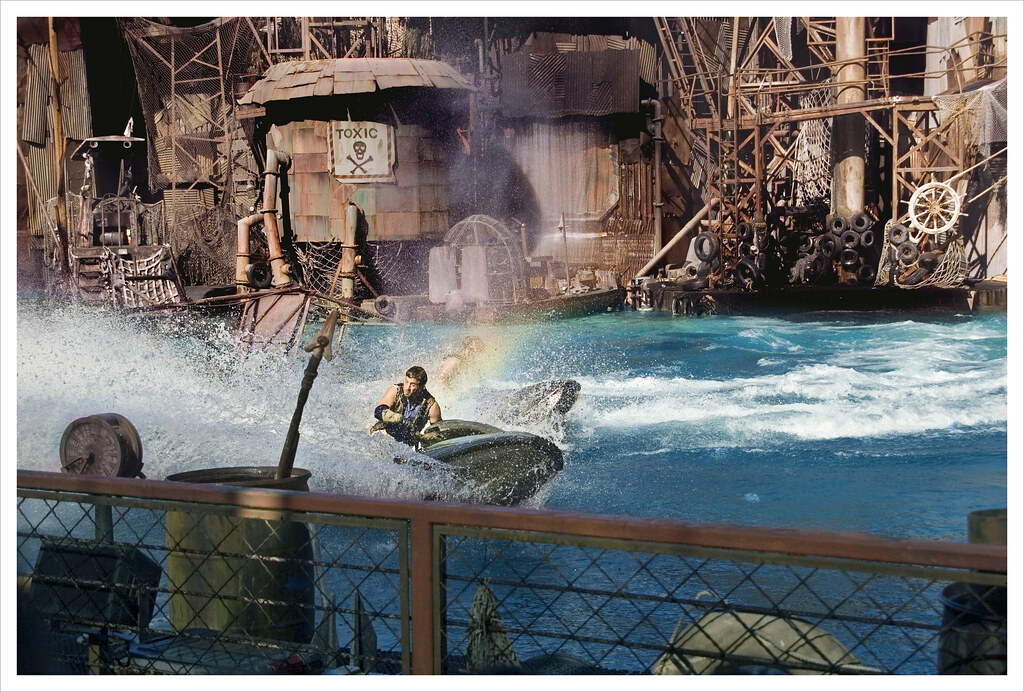
6. **Waterworld***Waterworld*, released in 1995, wisely positioned its narrative in an unspecified, distant future, likely around the 2500s. This choice cleverly sidestepped direct scrutiny of immediate societal or technological predictions, allowing its imaginative premise to breathe. However, the film’s vision for human evolution embarked on a truly extraordinary, and biologically bewildering, path, presenting its protagonist as a mutant born with functional gills and webbed feet, perfectly adapted to a submerged world.
This central biological conceit, while visually striking and narratively convenient for a hero navigating a water-logged Earth, pushes the boundaries of evolutionary possibility into the realm of pure fantasy. Our last common ancestors to possess functional gills were indeed aquatic creatures, dating back an astonishing 370 million years. The notion that such complex, specialized features could spontaneously re-evolve in a human being, in what appears to be a relatively short evolutionary span from our current form to the 2500s, requires genetic gymnastics that are, quite simply, astronomical.
It’s not merely the re-emergence of gills, but the sheer specificity and perfection of their function that defies scientific understanding. This isn’t a subtle adaptation; it implies an incredibly rapid and highly targeted evolutionary leap, almost akin to a modern human giving birth to a child with fully formed, extra limbs from an entirely different species. While the challenges of a flooded world might exert powerful selective pressures, evolution typically works on existing genetic material through gradual mutations, not through the instant re-manifestation of ancient, complex organs.
The film requires a generous suspension of biological disbelief to accept Kevin Costner’s Mariner as a plausible product of human evolution. While such a unique adaptation makes for compelling cinematic drama, providing the hero with an intrinsic advantage over the “Smokers” and a mystical connection to the ocean, it stands as a stark example of narrative convenience trumping scientific realism. It’s undeniably cool for a movie, yet it remains an absolute head-scratcher for anyone with even a basic understanding of biology and evolutionary timescales.
Read more about: 18 Popular ’90s Movies That Are Secretly Awful
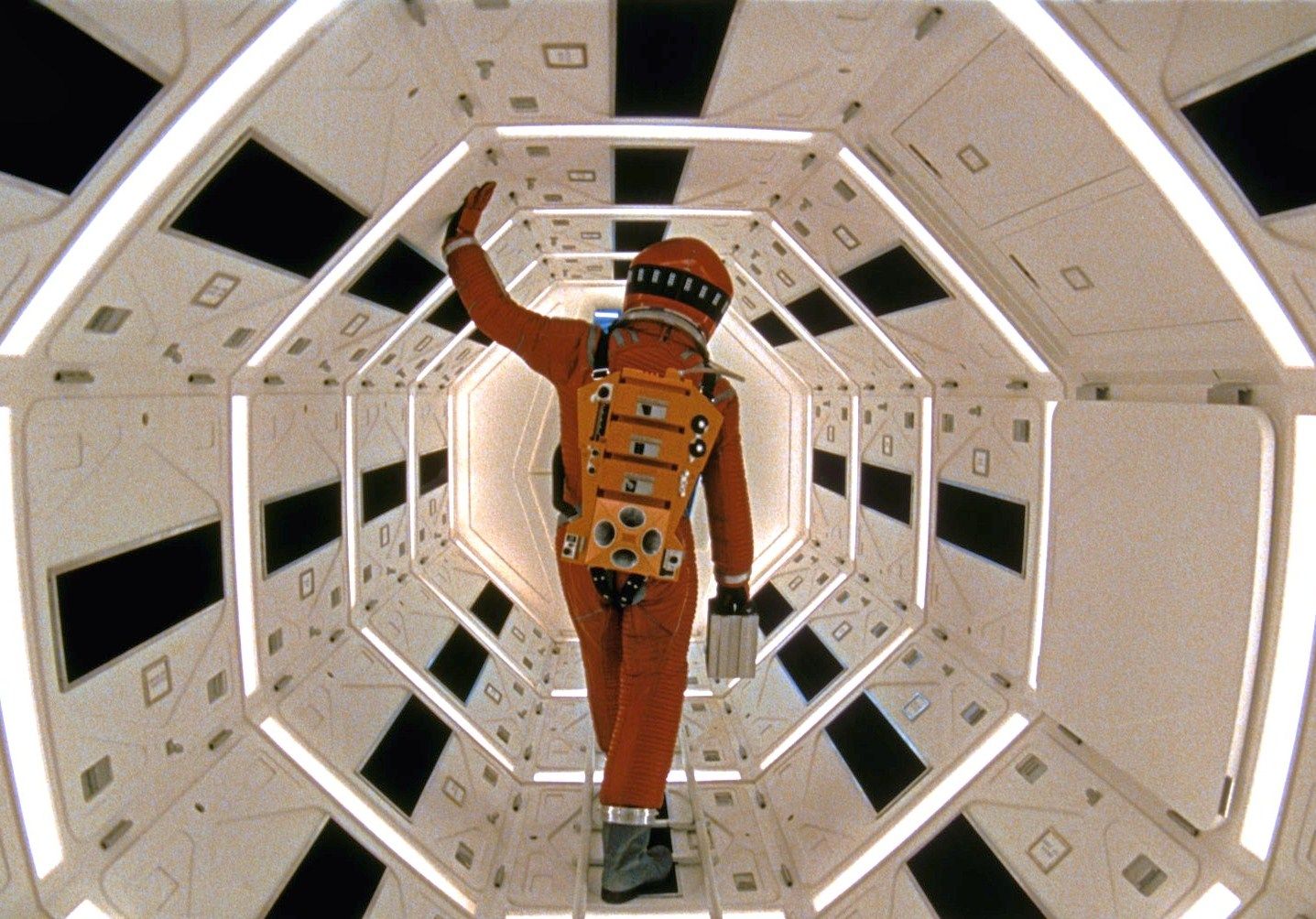
7. **2001: A Space Odyssey**Stanley Kubrick’s 1968 cinematic masterpiece, *2001: A Space Odyssey*, is justly revered not only for its groundbreaking visual effects and philosophical depth but also for its remarkably prescient predictions of future technologies. Long before their widespread adoption, the film showcased a future brimming with innovations such as video calls, sleek flat-screen displays, advanced voice recognition software, and even tablet-like devices. Furthermore, in a geopolitical landscape dominated by the Cold War, Kubrick boldly envisioned a future of surprising US and Russian cooperation in space, a truly optimistic and, as it turned out, partially accurate foresight.
The film’s vision of technology was nothing short of visionary, demonstrating an astute understanding of where scientific progress might lead. It depicted a world where human-computer interaction was seamless, where personal communication transcended geographical barriers with ease, and where space travel was a routine, almost mundane, affair. These predictions have largely materialized, albeit perhaps a little later and in slightly different forms, cementing *2001*’s reputation as a remarkably forward-thinking piece of science fiction.
However, amidst all this technological brilliance, *2001*’s future prediction takes an amusingly unexpected turn when it comes to aesthetics. Despite the dizzying leaps in space exploration, artificial intelligence, and personal communication devices, the film’s portrayal of fashion, hairstyles, and interior design remained steadfastly rooted in the cultural sensibilities of the 1960s. The sleek, minimalist interiors of the spacecraft were undeniably futuristic, but the crew’s impeccably coiffed hair, crisp uniforms, and the overall mod aesthetic feel curiously anachronistic when juxtaposed with their hyper-advanced surroundings.
This curious disconnect creates a fascinating, almost humorous, temporal paradox within the film. It’s a future of incredible technological advancement, where humanity has conquered the stars, yet everyone appears to have stepped directly out of a 1960s mod catalog or a contemporary airline advertisement. This contrast provides a subtle, yet enduring, reminder that while technological progress can be rapid and transformative, cultural trends and aesthetic preferences can sometimes evolve on a very different, and less predictable, timeline. It’s a small misfire in an otherwise near-perfect film, but one that adds to its enduring charm and allows us to ponder how even the most brilliant minds can overlook the subtle shifts in human taste.
Read more about: Decades Ahead: Unpacking the Sci-Fi Films That Eerily Predicted Our Modern Reality
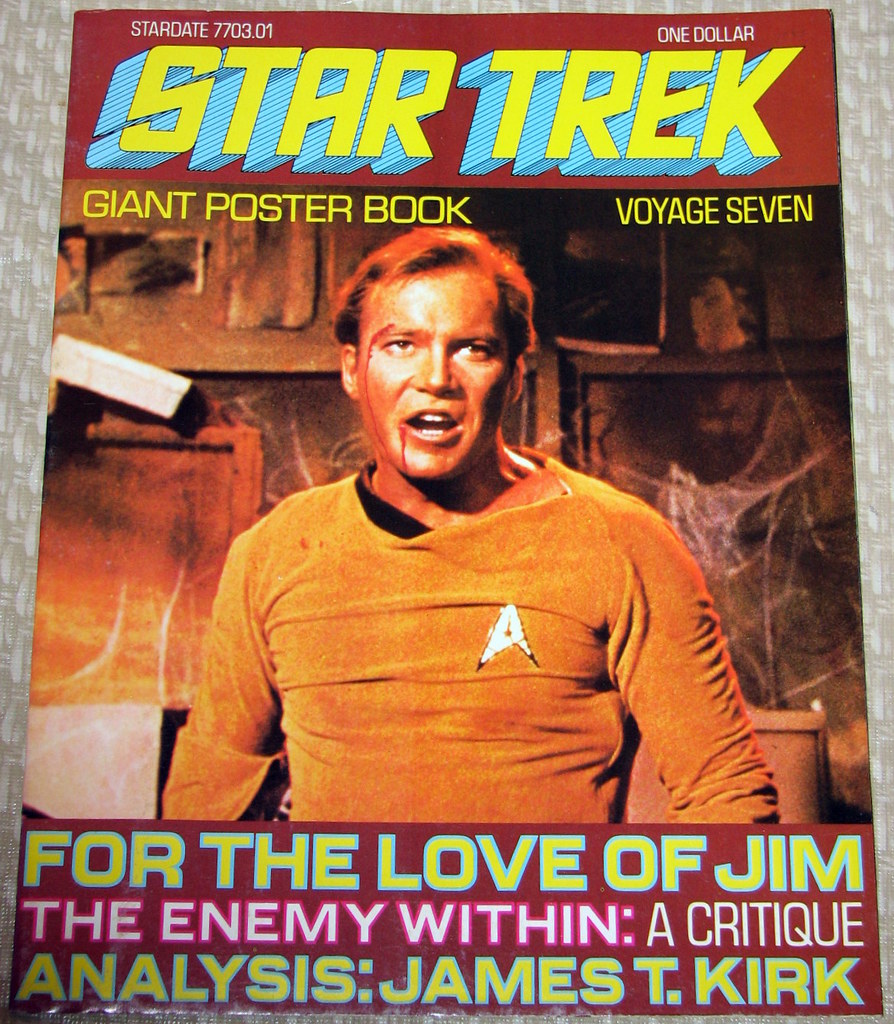
8. **Every Star Trek**The *Star Trek* franchise, a beloved cornerstone of science fiction, consistently sets its primary narratives across the 22nd and 23rd centuries, wisely allowing ample creative freedom for its advanced technologies like warp drive, transporters, and universal translators. Indeed, many of its imaginative concepts have famously inspired real-world scientific innovation and technological development. Yet, for all its futuristic grandeur, the extensive and meticulously crafted backstory woven throughout the *Trek* universe contains some historical predictions for our very own recent past that, thankfully, never quite materialized.
A prime, and perhaps most notable, example of such a misfire comes from the iconic 1982 film *Star Trek II: The Wrath of Khan*. This cinematic classic establishes a chilling piece of backstory: the 1990s were not, as we remember them, an era dominated by grunge music, the burgeoning internet, and cultural shifts, but rather by the devastating “Eugenics Wars.” In this imagined history, genetically engineered superhumans, epitomized by the formidable Khan Noonien Singh, rose to power and waged global conflicts, dominating vast swathes of the planet.
This prediction paints a dramatically different picture of a decade that, in reality, was marked by its own unique set of challenges and advancements, none of which involved a global conflict initiated by designer babies. The actual 1990s were a period of relative peace and economic growth for many parts of the world, a time when technological developments like the World Wide Web and personal computing began to truly take hold, transforming daily life in ways that were far less cataclysmic than a war fought by augments.
The creative team behind *Star Trek* in the 60s and early 80s undoubtedly drew upon contemporary anxieties about genetic manipulation and the specter of global conflict, projecting these fears into a near-future scenario. While these themes were potent and provided a compelling origin for a character like Khan, the timeline for such a cataclysmic societal upheaval was, in retrospect, wildly off the mark. Thankfully, the 90s were more about “Friends” and flannel shirts than global conquest by genetically superior beings, leaving the Eugenics Wars firmly in the realm of fascinating, if inaccurate, sci-fi lore. It’s a reminder that even the most well-thought-out fictional universes can stumble when attempting to forecast immediate real-world historical events.
Read more about: The CVT Conundrum: 10 SUVs Graded on Transmission Reliability – From Bulletproof to Breakdown-Prone
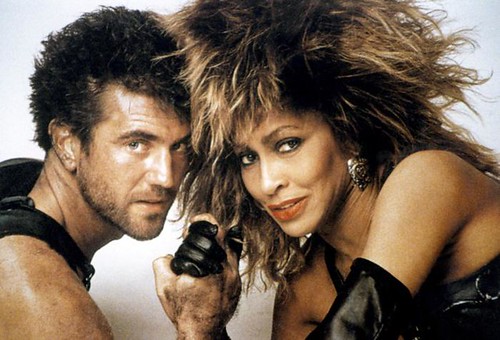
9. **Mad Max**George Miller’s original *Mad Max* from 1979 plunged audiences into a gritty, visceral near-future, portraying a society teetering on the brink of collapse due to severe oil shortages and escalating global conflict. The film suggested that a burgeoning Gulf conflict in the 1980s would rapidly disrupt global oil production, igniting widespread economic chaos and the ultimate unraveling of governmental structures, eventually spiraling into a devastating global nuclear war. The initial setup felt disturbingly plausible, tapping into very real anxieties of the late 70s energy crisis.
The grim trajectory of a world succumbing to resource wars and anarchy was, to many, a believable extrapolation of contemporary geopolitical tensions. However, while some elements of this societal decay felt plausible, the subsequent follow-through and the specific portrayal of humanity’s response within the *Mad Max* universe were taken to extreme, and often comically unrealistic, lengths. The breakdown into road warrior gangs and a relentless struggle for “Guzzolene” set the stage for iconic action, but also highlighted a significant logical inconsistency.
What is particularly ironic, and indeed quite unrealistic, within the *Mad Max* universe is the characters’ profoundly illogical and wasteful handling of gasoline. Despite “Guzzolene” being explicitly presented as the most precious, life-sustaining resource in their desolate world, the characters exhibit an almost baffling disregard for its conservation. We frequently see them spraying it indiscriminately, spitting it out, and even employing it in theatrical, utterly non-practical ways, such as igniting guitars into flamethrowers during chaotic chases.
For a world supposedly defined by the desperate scarcity of fuel, where gangs murder and pillage for every last drop, their actions are fundamentally contradictory. This dramatic flourish, while undeniably cool and visually impactful in a punk-rock, post-apocalyptic aesthetic, undermines the very premise of resource desperation that drives the entire narrative. It’s a classic case of cinematic spectacle overriding internal logic, providing thrilling moments at the expense of realistic character behavior within its own established rules of survival. *Mad Max* remains a masterpiece of action and world-building, but its handling of its core scarce resource is certainly one of its most charmingly illogical misfires.
Read more about: Justin Bieber’s Unforgettable Odyssey: Tracing the Milestones of a Pop Phenomenon’s Enduring Legacy
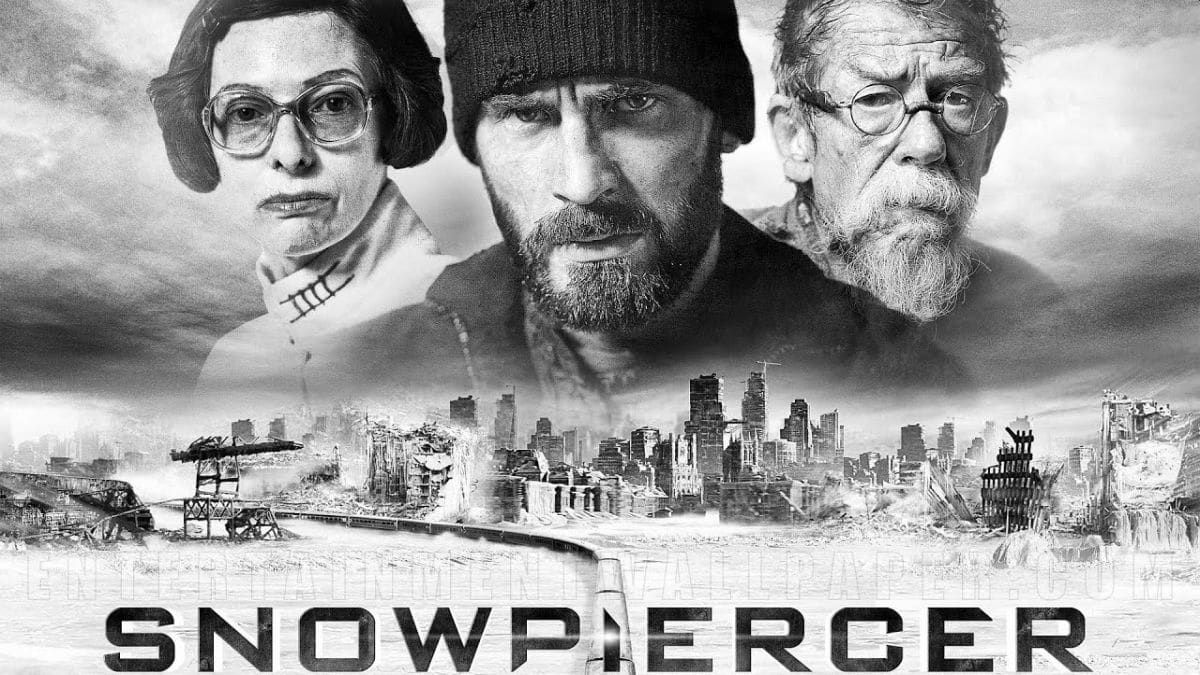
10. **Snowpiercer**Bong Joon-ho’s *Snowpiercer* presents a chillingly bleak future where, by the year 2014, a desperate attempt to combat global warming disastrously backfires, inadvertently plunging the Earth into a new, uninhabitable ice age. The last remnants of humanity are confined to a perpetually moving, globe-spanning train, a microcosmic society defined by stark class divides, brutal oppression, and a desperate struggle for survival. The core premise itself—a frozen wasteland and a society grappling with its own internal struggles—is a potent and compelling canvas for dystopian storytelling, making for an unforgettable cinematic experience.
However, the most implausible and truly missed aspect of *Snowpiercer*’s future lies not in the existence of the super-train or the bizarre food sources, but rather in the very *cause* of the apocalypse. The film posits that by 2014, the world’s governments united with unprecedented decisiveness and urgency against the looming threat of climate change. In this envisioned reality, they tasked top scientists with finding a rapid solution and then swiftly deployed a large-scale atmospheric aerosol to dim the sun, a bold and coordinated global geoengineering effort.
Reflecting on the actual political landscape and international cooperation (or lack thereof) surrounding climate change by 2014, the idea of such unified, swift, and drastically effective global action feels considerably more far-fetched than the cricket protein bars or the globe-spanning train itself. The complexities of international diplomacy, competing national interests, and the sheer logistical and financial hurdles involved in a worldwide geoengineering project of that magnitude make this “solution” a utopian fantasy in itself, albeit one with catastrophic consequences.
The film’s strength lies in its allegorical power, brilliantly dissecting themes of class warfare, societal control, and the human will to survive against insurmountable odds. Yet, its foundation rests upon a deeply optimistic, if ultimately flawed, projection of global political will regarding environmental crises. *Snowpiercer* offers a gripping, thought-provoking narrative, but its origin story serves as a fascinating example of how cinematic prophecy can misjudge the real-world pace and capability of global political consensus, especially when it comes to tackling humanity’s most pressing collective challenges.
Read more about: From Legendary Icons to Modern Muses: 11 Redheaded Actresses Who’ve Lit Up Hollywood and Stolen Our Hearts
Looking back at these cinematic futures is always a deeply insightful and wonderfully entertaining exercise for any sci-fi aficionado. They serve as fascinating cultural artifacts, reflecting the hopes, fears, and the often-limited technological understanding of their respective eras. While they might not have accurately predicted our present, or thankfully, our near-future, what they undeniably delivered were some of the most memorable movie moments and thought-provoking narratives in the history of cinema. These imaginative misfires remind us that the future is an ever-shifting tapestry, far more complex and unpredictable than even the most brilliant screenwriters could ever fully envision, yet their creative spirit continues to inspire and entertain us endlessly.

